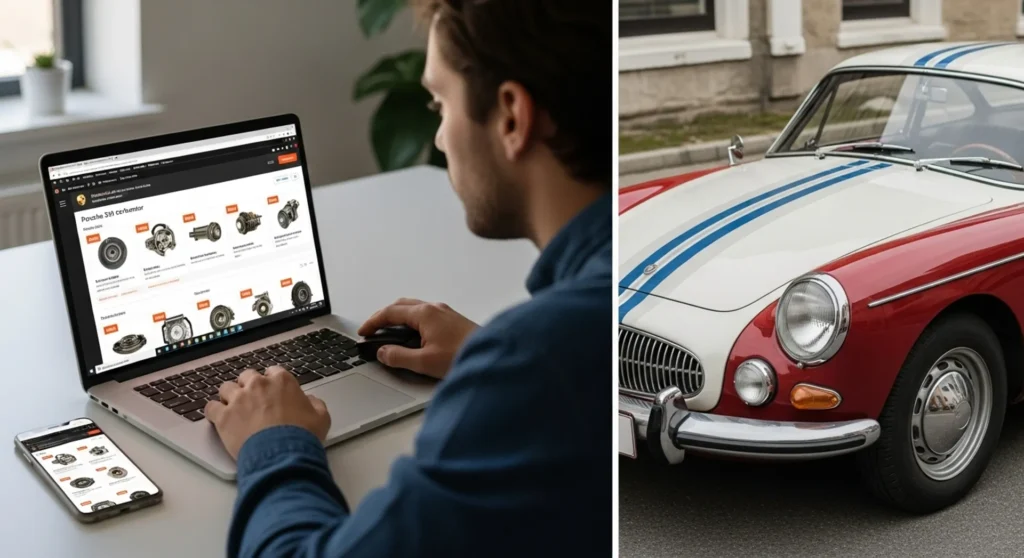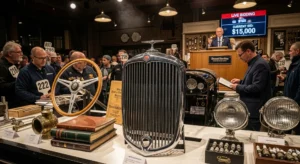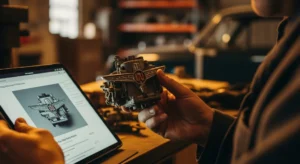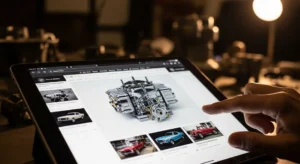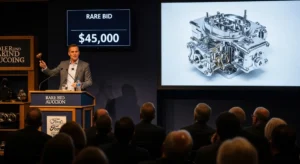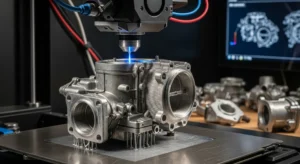For anyone restoring or maintaining a classic car, finding the right parts can feel like a treasure hunt. Some parts haven’t been manufactured in decades, while others exist only in limited numbers or in faraway corners of the globe. In the past, this often meant scouring junkyards, swapping at car shows, or relying on word-of-mouth. Today, the digital age has transformed how enthusiasts source rare vintage car parts, opening up opportunities that blend tradition with technology.
The Challenge of Rare Vintage Parts
Classic vehicles are more than machines; they are rolling pieces of history. Authenticity matters, which means that enthusiasts often seek original equipment manufacturer (OEM) parts instead of reproductions. The problem? Time and attrition. As the decades pass, stockpiles dwindle, suppliers close, and availability shrinks. Some vehicles — particularly limited-production models — pose even greater challenges.
Modern tools and platforms have made the search easier but also more competitive. While it’s simpler now to locate a rare carburetor or a specific trim piece, global demand means competition is fierce, and authenticity verification has never been more important.
Online Marketplaces: Expanding the Search
Digital marketplaces are the first stop for many restorers. Platforms such as eBay Motors and specialty auction sites host global listings that allow collectors to bid, buy, and negotiate in real time. Sellers can upload detailed photos, and buyers can compare options instantly.
However, online shopping comes with its risks. Not every part is genuine, and descriptions can be misleading. Successful buyers usually follow best practices:
- Cross-check part numbers against official catalogs
- Request multiple images to verify condition
- Check seller ratings and reviews
- Ask about return policies before committing
Specialized Forums & Communities
Classic car communities remain a goldmine of knowledge. Enthusiasts gather on forums and dedicated groups to trade advice and parts. Communities often operate on trust, and members value their reputation. Being active in these spaces not only helps you source parts but also builds credibility and connections that may pay off years down the line.
Popular communities for sourcing parts include marque-specific forums (for example, CorvetteForum for Corvettes or Porsche Club forums) as well as larger classic car boards where users trade across multiple models.
Social Media & Networking
Platforms like Facebook Marketplace and Instagram are becoming powerful sourcing tools. Sellers now showcase rare carburetors, grilles, or dashboards with hashtags that make them searchable worldwide. Networking directly with restoration shops through social platforms often uncovers hidden inventories that never reach public marketplaces.
3D Printing & Reproduction Parts
Technology is also reshaping availability. For non-critical components like knobs, trim, or emblems, 3D printing can reproduce parts with remarkable accuracy. While purists may argue these are not “true originals,” they allow restorers to maintain functionality while continuing the hunt for OEM items.
Some workshops even offer hybrid services: scanning original parts and using modern materials to create exact replicas. This reduces downtime while preserving design accuracy. For rare cars where parts are no longer produced at all, reproduction may be the only viable option.
Authenticity Verification in the Digital Era
One of the biggest challenges is verifying authenticity. The digital age offers both risks and solutions. Scammers can easily upload convincing photos, but tools like blockchain documentation and digital certificates of authenticity are beginning to gain traction.
For example, blockchain systems can timestamp and store immutable proof of provenance, ensuring that records of a rare carburetor or gear set cannot be altered. Academic research has even proposed using blockchain frameworks to document restoration parts and ownership history. This could eventually become the gold standard for verification.
Auctions & Live Bidding
Classic car auctions have gone online, and so have their parts divisions. International houses like Barrett-Jackson and RM Sotheby’s occasionally handle vintage components, while niche auction sites deal exclusively in automobilia and parts. The advantage of auctions is transparency: detailed listings, professional evaluations, and in some cases, guarantees of authenticity. The downside is competition and the potential for high prices when rare parts hit the virtual block.
Tips for Successful Digital Sourcing
Whether you’re a seasoned restorer or a first-time hobbyist, sourcing parts digitally requires both strategy and caution. Here are some proven tips:
- Research thoroughly: Cross-reference part numbers, model years, and compatibility.
- Build relationships: Trusted sellers and community connections increase success.
- Set alerts: Use search alerts on marketplaces so you know when a rare item appears.
- Inspect virtually: Request detailed photos and, if possible, video verification before purchase.
- Balance originality vs practicality: If authenticity is not critical, high-quality reproductions can keep projects moving.
- Track your purchases: Keep digital receipts and part history in case of resale or valuation needs.
The Global Market Effect
The digital age has effectively created a global market. A part sitting in a garage in Sweden can end up in a Mustang project in California or a Jeep restoration in the Philippines. This worldwide reach means greater opportunity but also higher competition. Prices for some rare parts have risen significantly as more buyers enter the global pool.
Supporting Local Networks
While digital tools are invaluable, don’t discount local suppliers. Classic car clubs, swap meets, and regional workshops still provide access to parts and knowledge. In fact, some shops deliberately avoid selling online, preferring to keep rare stock for in-person clients. A balanced sourcing strategy includes both online tools and local relationships.
Looking Ahead: The Future of Rare Parts Sourcing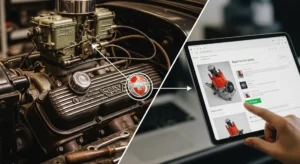
Technology will only continue to shape the sourcing landscape. Expect growth in:
- Blockchain-based provenance systems
- AI-powered search engines that can match photos of parts to listings worldwide
- Greater use of 3D printing for reproduction parts
- Integrated global marketplaces specializing in rare automotive components
The role of the restorer will remain part detective, part craftsman, and part networker. But with today’s digital tools, the treasure hunt has gone global, making even the rarest parts more accessible than ever before.
Conclusion
Sourcing rare vintage car parts in the digital age requires both old-school patience and modern savvy. Marketplaces, communities, and new technologies provide unprecedented opportunities, but success depends on research, authenticity verification, and strong networks. Whether you’re chasing a single missing trim piece or a full drivetrain, the digital world is now your workshop’s most powerful tool. As the market evolves, restorers who adapt to digital sourcing will have the best chance of keeping history on the road.

